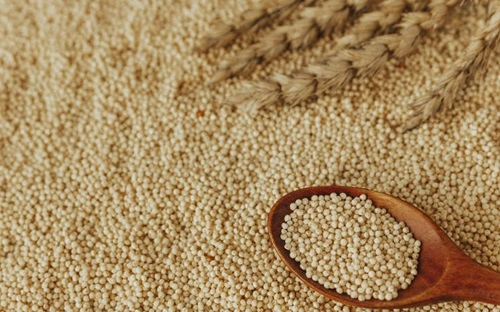Millets are tiny grains that are packed with nutrients and have been an important part of human diets for thousands of years. They are known for their health benefits, especially in India and Africa, where they have been grown for a long time. Millets are not just good for our health but also good for the environment because they need less water to grow compared to other crops like rice and wheat. Let’s learn some interesting facts about millets and why they are becoming more popular today!

1. Millets Are One of the Oldest Grains
Millets are one of the oldest known grains, dating back more than 7,000 years. They have been grown in ancient civilizations like those in India, China, and Africa. People used millets as a staple food long before rice and wheat became popular. Even today, millets are widely eaten in many parts of the world.
2. Types of Millets
There are several types of millets, and each type has its own unique taste and health benefits. Some of the most common types include:
- Pearl Millet (Bajra): One of the most widely grown millets, pearl millet is rich in iron and helps improve digestion.
- Finger Millet (Ragi): This millet is known for being a great source of calcium, which is important for strong bones and teeth.
- Foxtail Millet (Kangni): It is full of protein and good for weight loss.
- Sorghum (Jowar): A popular millet in India, it’s high in fiber and helps lower cholesterol levels.
- Barnyard Millet (Sanwa): This millet is easy to digest and is a good option for people who want gluten-free food.
3. Millets Are Gluten-Free
One of the best things about millets is that they are naturally gluten-free. This makes them a great option for people who have gluten allergies or celiac disease. Millets can be used to make gluten-free breads, porridge, and even snacks. Because they are gluten-free, they are easy on the stomach and good for digestion.
4. Millets Are Rich in Nutrients
Millets are known for being highly nutritious. They are rich in fiber, vitamins, and minerals such as magnesium, calcium, iron, and zinc. Millets are also high in protein and provide essential amino acids that are important for the growth and repair of the body. Eating millets regularly can improve overall health, boost energy levels, and strengthen the immune system.
5. Millets Are Good for the Environment
Millets are not only good for our health but also for the environment. These crops need less water compared to rice and wheat, and they can grow well in dry or semi-arid regions. Millets are also resistant to pests and diseases, which means they require fewer pesticides. By growing millets, farmers can save water and protect the soil, making them a sustainable choice for agriculture.
6. Millets Help Control Blood Sugar Levels
Millets have a low glycemic index (GI), which means they release sugar slowly into the blood. This makes them a good choice for people with diabetes or those who want to maintain steady blood sugar levels. Including millets in the diet can help prevent blood sugar spikes and keep energy levels stable throughout the day.
7. Millets Are Great for Weight Loss
If you are trying to lose weight, millets can be a great addition to your diet. They are high in fiber, which helps you feel full for a longer time. This means you are less likely to overeat or snack between meals. Millets are also low in calories, making them a good option for people who want to manage their weight.
8. Millets Are Easy to Cook
Millets are easy to cook and can be used in a variety of dishes. You can use them to make porridge, khichdi, rotis, and even salads. In South India, ragi (finger millet) is used to make delicious dosas and idlis. In some parts of India, bajra (pearl millet) is used to make flatbreads that are eaten with vegetables and curries. Millets can also be added to soups and stews for extra nutrition.
9. Millets Were Called “Poor Man’s Food” but Are Now a Superfood
In the past, millets were often called the “poor man’s food” because they were grown in dry regions where rice and wheat couldn’t grow. However, today, millets are considered a superfood because of their health benefits. Many people are now turning to millets for their nutritious value and because they are a better option for the environment.
10. International Year of Millets
The United Nations has declared 2023 as the International Year of Millets to promote the cultivation and consumption of these nutrient-rich grains around the world. This initiative aims to encourage more people to include millets in their diet and support farmers who grow millets.
Conclusion
Millets are small but mighty grains that offer big health benefits. They are packed with nutrients, easy to cook, and great for people looking to eat healthy. As we learn more about their advantages, millets are becoming more popular and are recognized as an important food for a healthy and sustainable future. So, the next time you’re thinking about what to eat, give millets a try!



